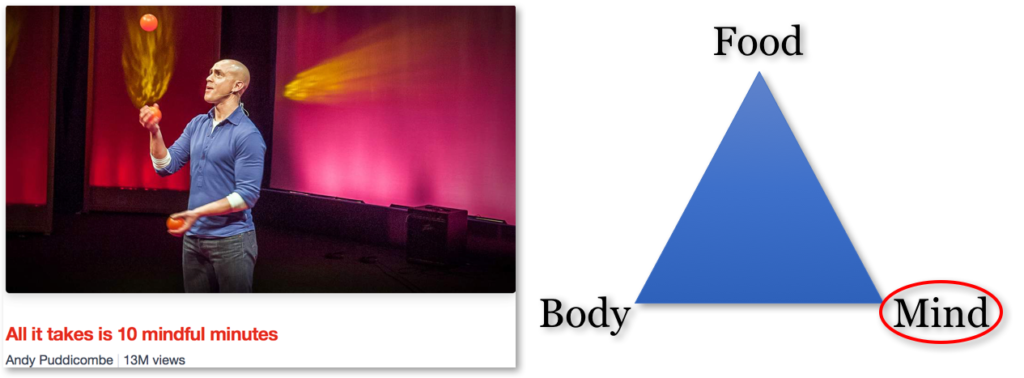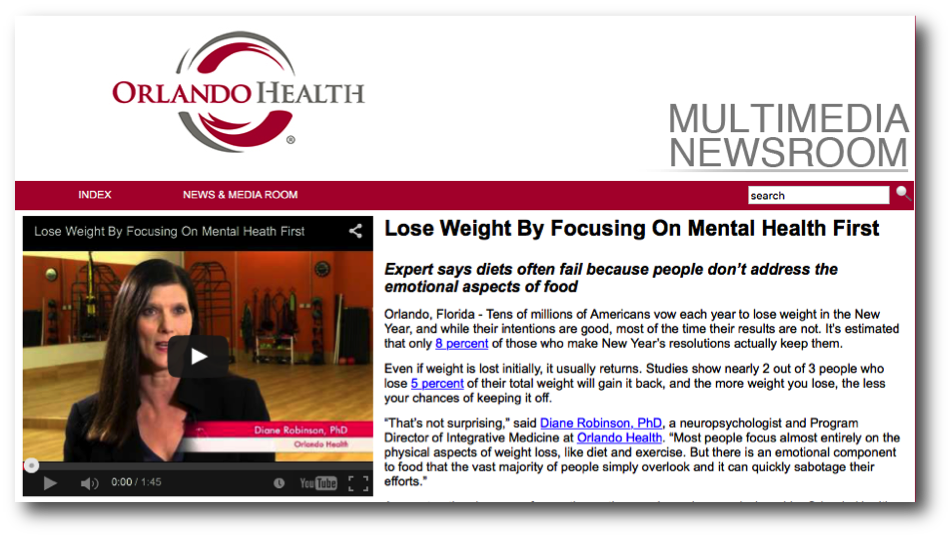Mindfulness is being fully aware, fully conscious, fully awake. Being mindful (aware, conscious, fully awake) is the key to living a more focused, calm and clear life in the midst of the constant chaos of moment-to-moment impulses, thoughts, feelings, emotions and experiences that tend to sweep us away mindlessly.
The difference between mindlessness and mindfulness is the difference between absently bouncing on a hamster wheel while being bombarded with everything life throws at you – with incredible accuracy – and using fully engaged awareness to drop back and see that hamster wheel and all the mayhem that surrounds it for what it really is.
Mindfulness is not checking out of life. Not at all. Mindfulness is checking into life fully engaged with eyes open, razor sharp clarity.
The root of the word “mindfulness” is “mind”, and there’s nothing more important to us than our mind. Our mind is who we are and what we are – always – and it is not our brain. Instead, our mind is an active process. It is all the mental activity going on in our brain all the time that makes up our ability to think and be aware. That ability to be aware, or the state of awareness, is consciousness.
By nature, our minds have been built over millions of years to help us survive in a random world by processing streams of random thoughts and emotions that affect us from a range of a light flicker to a complete attention-consuming fire. We can’t stop that randomness and we never will.
The real problem, though, isn’t the randomness of thoughts and emotions as they appear constantly in our heads.
No, the big problem is our tendency to identify with those thoughts and the emotions connected to them. Identifying means that we let those thoughts and emotions tell us who we are, which then sweeps us away on a mindless hamster wheel run – all at the tremendous expense of missing the feet-on-the-ground, full-on life power of experiencing our here and now present.
The bright side of this story (there’s always a bright side!): everything mentioned above doesn’t have to be that way, and the key is mindfulness.
Sure, I’d heard of mindfulness years ago but never practiced it formally until my good friend, Jay, nudged me to do something about it not once but twice. And I greatly appreciate his persistence!
As Andy Puddicombe says in his very focused and equally entertaining 10-minute TED Talk that you can see by clicking this link or any picture on this page, “We can’t change every little thing that happens to us in life, but we can change the way we experience (them)”. Changing our perspective, relative to moment-to-moment experiences, thoughts and emotions through mindfulness practice and regular application in our lives, is the key to living a more focused, calm and clear life. And, wow, from personal experience, what a difference that makes!
When you watch Andy’s video, you’ll hear him talk about one of the formal methods of achieving mindfulness: meditation. All my life, my response to the idea of meditation was, “There is no way I’m gonna’ take time out to sit crosslegged, eyes closed and say “Ommmm…”. Now, again thanks to my good bud, Jay’s, persistence, I’ve learned that the meditation I now practice daily has everything NOT to do with that and is instead all about waking up and learning how to make the most of my moment-to-moment life as possible. To say that mindfulness and meditation have significantly affected my life is a gross understatement.
But more about that and the specific practice I’ve adopted soon! In the meantime, please give Andy’s video a look. There’s no doubt in my mind that what he says has the power to change your life.

 January 31st, 2022
January 31st, 2022 




